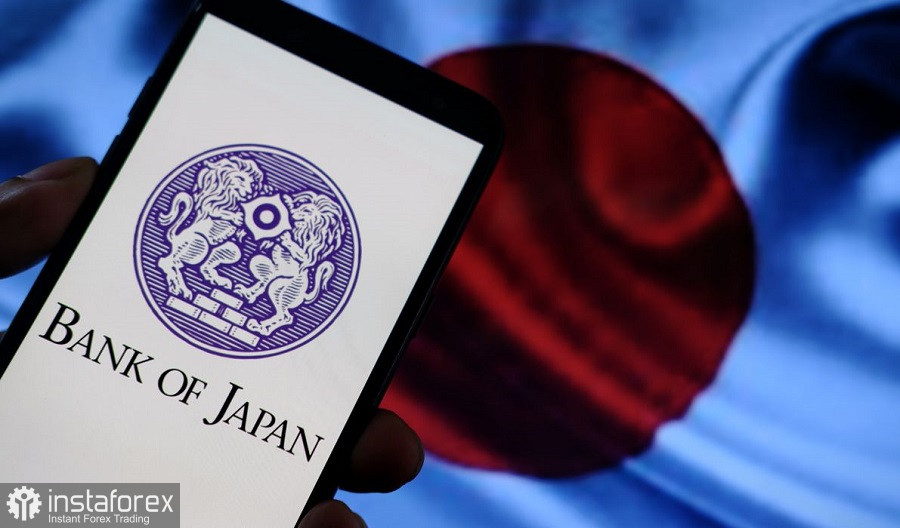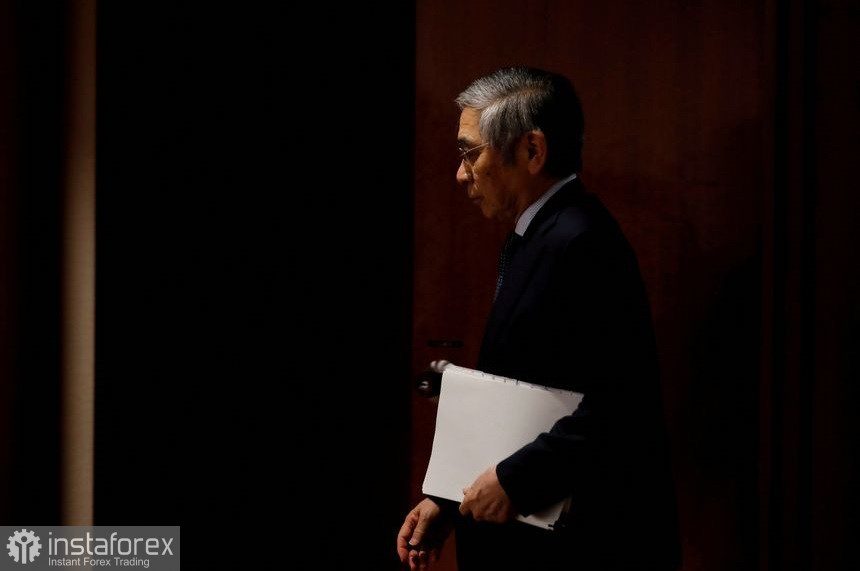The Central Bank will convene for the first time in 2023 on Wednesday, January 18. The majority of experts predict that this occurrence will cause the USD/JPY pair to experience a "storm of volatility." Looking ahead, it should be emphasized that, in my opinion, market expectations are exaggerated: traders are pressuring the Japanese regulator to prolong the "December banquet," although Haruhiko Kuroda has already stated that the Central Bank will continue to adhere to its accommodative stance. Yet the USD/JPY pair is trading between 127 and 128 figures on the eve of the January meeting, and yesterday it even broke the 8-month price minimum, falling to 127.25.
The pair's southern prospects are now a hot topic on the market; in particular, Societe Generale experts predict that in the coming months, the price will drop to the 118th position and potentially even lower, to the 115th position. The currency strategists of the corporation acknowledge that they open short positions in the framework of long-term trading during the northern surges of the USD/JPY. As a result, the Bank of Japan meeting in January, which is likely to disappoint the pair's sellers "at the moment," will be a gift for Societe Generale (and other traders who use similar strategies), as the Japanese regulator will make the market's entry circumstances more favorable.

Let me remind you that the Bank of Japan had to increase the yield fluctuation range for 10-year bonds in December from +/- 0.25% to +/- 0.5% to stop the flywheel of hawkish expectations. Contrary to Kuroda's "dovish" pronouncements, traders actively sell Japanese government bonds in anticipation of additional tightening. In turn, the Central Bank is compelled to buy them. The JGB 10-year yield exceeded a new limit of 0.5% at the beginning of this month, which led to the Central Bank starting to buy bonds.
In other words, if large-scale currency interventions conducted by the Japanese government in the fall prevented the yen from depreciating, the Central Bank is now required to spend trillions of yen to buy government bonds. It is known that the Central Bank purchased JGBs in the 10-year maturity range for 16 trillion yen in just the first two weeks of January, which is twice as much as it did in all of November last year.
The market and Kuroda have a tense relationship.
Haruhiko Kuroda's verbal pump-up doesn't help. He stated at the end of December that the regulator will not be abandoning the ultra-soft monetary policy anytime soon. The decision to widen the corridor, in his words, "was not the first step toward abandoning a large-scale incentive program; it was made to amplify the effect of soft PEPP."
Here, we may anticipate with a high degree of probability that Kuroda will reiterate the aforementioned theses in light of the outcomes of the January meeting, reassuring the markets of his dedication to the accommodative policy.
There is a "but" in this situation, though, as the current Bank of Japan governor's second (and final) term expires in April, ensuring his removal from office in 3.5 months. Therefore, it is important to consider his rhetoric in light of his forthcoming activities.

In reality, traders pay more attention to the opinions of Kuroda's potential successors than they do to him. There is growing market confidence that the Bank of Japan will continue to adjust the order of management of the yield curve or abandon it entirely in the upcoming months because all of the most obvious candidates for the job are expressing quite hawkish views.
For instance, Takehiko Nakao, a likely candidate for the position of future head of the Japanese Central Bank, declared at the end of December that he was in favor of a seamless exit from the Central Bank's ultra-soft monetary policy. He stated that the current policy's negative effects "have grown more significant." Takatoshi Ito, a different applicant for the job, made identical arguments. Commenting on the significant outcomes of the December meeting, he suggested that the Central Bank's decision to shift its approach to managing the yield curve "may be the first step towards abandoning the ultra-soft monetary policy environment."
Meeting in January: three scenarios
However, keep in mind that Haruhiko Kuroda, a reliable "dovish," currently serves as the head of the Japanese Central Bank. According to theory, there are three possibilities for how things might go after the January meeting's conclusions: 1) The Central Bank keeps all parameters in place; 2) It makes another adjustment to its policy by extending the acceptable range of yields on 10-year securities from the target level; and 3) It refuses to manipulate the yield curve.
The third alternative will undoubtedly result in the impact of a bomb going off, although it is the least likely. The USD/JPY pair will experience significant volatility in favor of the yen under the second scenario as well. The most likely scenario, though, is to keep things as they are. According to Kuroda's earlier remarks, he has no plans to veer from the dovish trajectory. In addition, the regulator's members may allude to potential flexibility on this topic in the subsequent statement's content, which will also be read favorably for the yen.
However, I'll say it again: Market expectations for the hawkish outcomes of the January meeting are exaggerated. The yen might rashly give up its positions across the market if all the PEPP's conditions stay the same and Kuroda reiterates his claim that he is prepared to further loosen monetary policy. In this instance, it is not required to go with the market's irrational decisions because, over the medium and long term, interest in the Japanese yen will rise once more, initially when it is paired with the dollar. Given that the Bank of Japan is about to undergo revolutionary changes, which will undoubtedly take place in the spring or summer, and that the Fed is getting ready to significantly slow down the rate hike rate, such a trend seems likely (and possibly prematurely end the current cycle of tightening the PEPP). Therefore, if we are thinking about long-term trading, it is wise to open short positions during the northern surges of the USD/JPY.





















